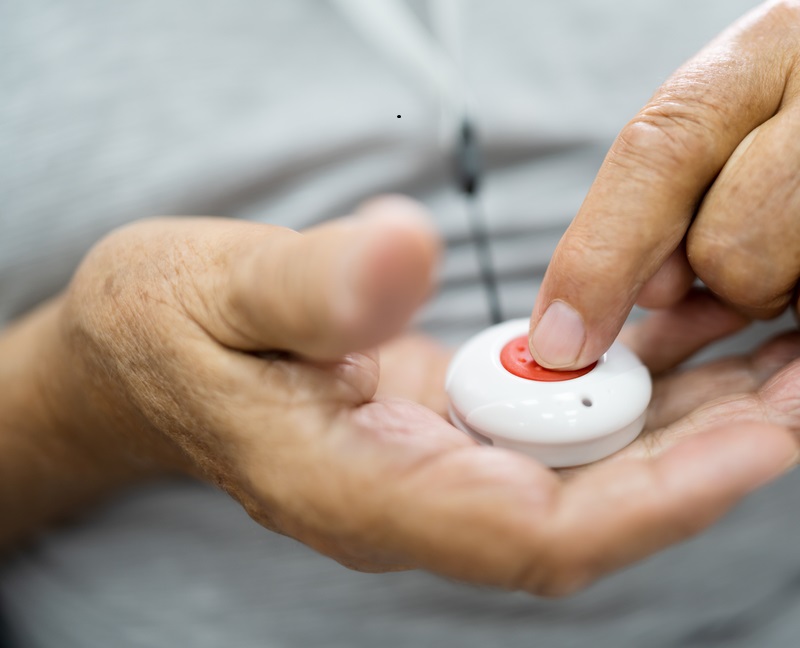Enhancing Elderly Safety with Emergency Call Buttons

As the global population ages, ensuring the safety and well-being of elderly individuals has become a growing concern. Many seniors prefer to live independently, but age-related challenges such as mobility issues, medical conditions, and the risk of falls can make living alone hazardous. Emergency call buttons have emerged as a crucial tool in enhancing elderly safety, providing immediate assistance during emergencies. These devices offer peace of mind to both seniors and their families, ensuring that help is just a button press away.
Growing Need for Elderly Safety Solutions
With advancements in healthcare, people are living longer than ever before. However, aging often comes with increased vulnerability to accidents and medical emergencies. According to the World Health Organization (WHO), falls are the second leading cause of accidental injury deaths worldwide, with adults over 60 suffering the highest frequency.
Many seniors live alone or spend long hours without supervision, making it essential to have reliable safety measures in place. Emergency call buttons serve as a lifeline, allowing seniors to summon help instantly, whether they experience a fall, sudden illness, or other urgent situations.
How Emergency Call Buttons Work
Emergency call buttons, also known as medical alert systems or personal emergency response systems (PERS), are designed to connect seniors with emergency services or designated contacts at the touch of a button. These devices typically include:
- A wearable button (pendant, wristband, or clip-on)
- A base unit connected to a phone line or cellular network
- 24/7 monitoring services (in some models)
When the button is pressed, the device establishes a two-way communication link with a response center or a pre-set emergency contact. Some advanced models include fall detection technology, automatically alerting help if a fall is detected, even if the user cannot press the button.
Key Benefits of Emergency Call Buttons
- Immediate Access to Help
In emergencies, every second counts. Emergency call buttons eliminate the need to reach a phone, which can be difficult during a fall or medical crisis. With simple press, seniors can connect to emergency responders, caregivers, or family members.
- Promotes Independent Living
Many seniors resist moving to assisted living facilities due to a desire for independence. Emergency call buttons allow them to stay in their homes longer while ensuring they have access to help when needed.
- Fall Detection Technology
Some modern devices come with automatic fall detection, using sensors to identify sudden impacts or lack of movement. If a fall occurs, the system alerts emergency services without requiring manual activation.
- Peace of Mind for Families
Family members and caregivers can rest assured knowing their loved ones have a reliable way to call for help. This reduces anxiety and allows seniors to maintain their autonomy.
- Cost-Effective Safety Solution
Compared to hiring full-time caregivers or moving to assisted living facilities, emergency call buttons are an affordable way to enhance safety. Many systems offer flexible payment plans, making them accessible to a wide range of users.
Types of Emergency Call Buttons
- Home-Based Systems
These systems consist of a base unit connected to a landline or cellular network and a wearable button. They are ideal for seniors who spend most of their time at home.
- Mobile GPS-Enabled Devices
For active seniors who go outdoors, mobile alert systems with GPS tracking ensure help can locate them anywhere. These devices often include waterproof designs and long battery life.
- Smartwatch Integration
Some smartwatches now include emergency alert features, combining health monitoring (heart rate, step count) with SOS functionality. These are great for tech-savvy seniors.
- Fall Detection-Enabled Buttons
These advanced devices automatically detect falls and send alerts, even if the user is unconscious or unable to press the button.
Choosing the Right Emergency Call Button
When selecting an emergency call button, consider the following factors:
- Ease of Use
The device should be simple to operate, with large buttons and clear instructions. Voice-activated options can be helpful for those with limited dexterity.
- Range and Connectivity
Home-based systems should have a sufficient range to work throughout the house and yard. Mobile systems should have reliable cellular or GPS connectivity.
- Battery Life
Look for long-lasting batteries or rechargeable options to ensure the device is always functional.
- Monitoring Services
Some systems include 24/7 professional monitoring, while others connect directly to family members. Choose based on the level of support needed.
- Cost and Subscription Plans
Compare monthly fees, contract terms, and additional features to find a cost-effective solution.
Real-Life Impact of Emergency Call Buttons
Numerous studies and testimonials highlight how emergency call buttons have saved lives. For example:
- A senior suffering a stroke pressed the button and received medical attention within minutes, preventing severe complications.
- An elderly woman who fell in her bathroom was unable to move but was rescued quickly due to her fall detection device.
- A man with a heart condition was able to alert emergency services during an episode, leading to timely intervention.
These real-world examples demonstrate how emergency call buttons provide critical support in life-threatening situations.
Overcoming Common Concerns
Some seniors may resist using emergency call buttons due to:
- Stigma or Pride
Some may feel that wearing an alert button signifies weakness. Educating them on its benefits—such as maintaining independence—can help overcome this reluctance.
- Technical Hesitation
Older adults unfamiliar with technology may find the devices intimidating. Choosing user-friendly models and providing proper training can ease adoption.
- Cost Worries
While some systems require monthly fees, the cost is often far lower than assisted living or in-home care. Many insurance plans and Medicare Advantage programs may offer partial coverage.
Conclusion
Emergency call buttons play a vital role in enhancing elderly safety, offering immediate assistance, promoting independence, and providing peace of mind for families. With various options available—from home-based systems to mobile GPS devices, seniors can find a solution tailored to their needs.
As technology advances, these devices will continue to evolve, incorporating AI, better fall detection, and seamless integration with smart home systems. For now, investing in a reliable emergency call button is one of the best ways to ensure the safety and well-being of elderly loved ones.




